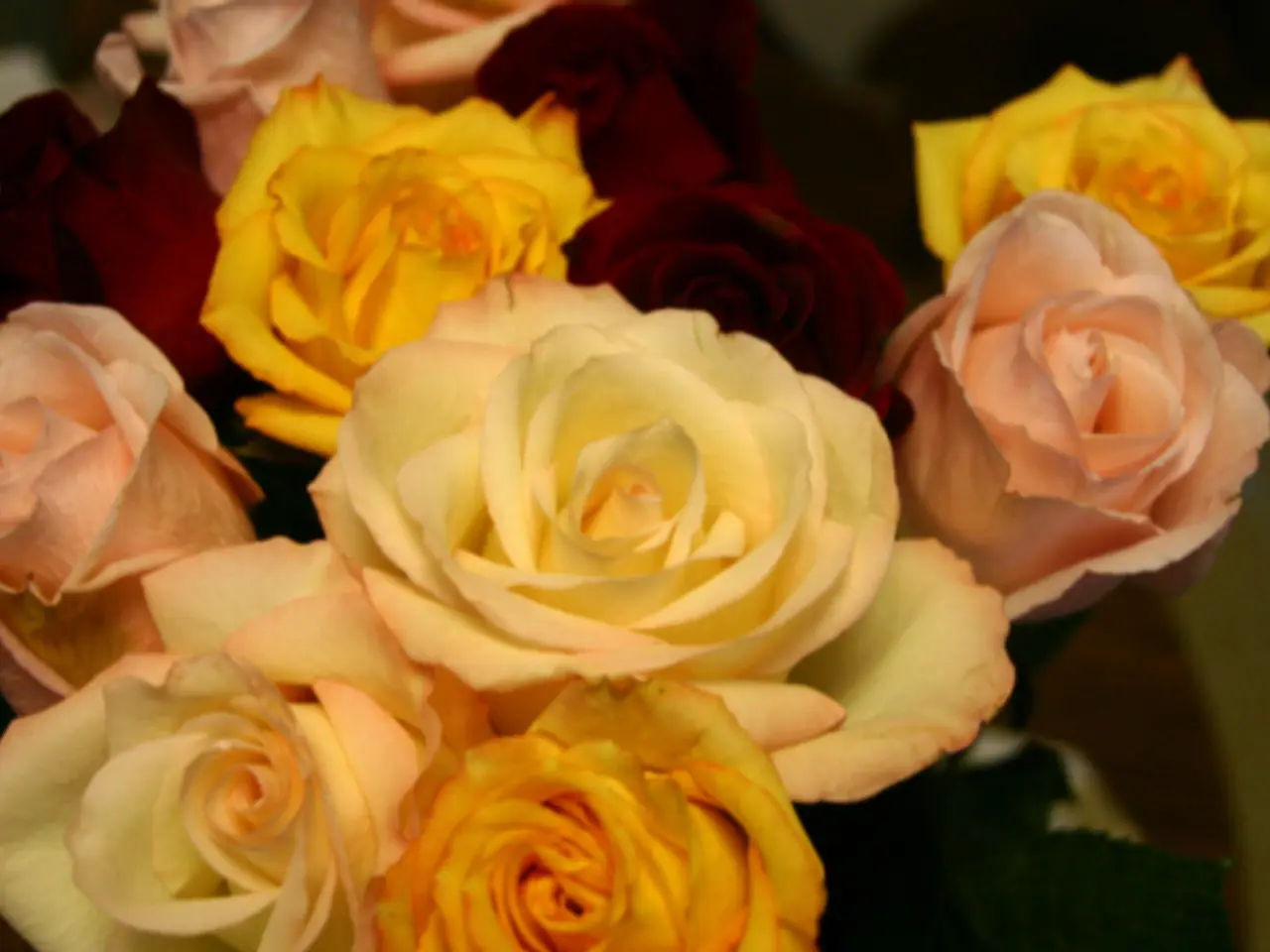Guidelines for Proper Timing and Techniques for Rose Pruning for Stunning Flower Displays
In the world of gardening, few plants are as beloved as the rose. Whether you have shrub roses, climbing roses, rambling roses, patio roses, or weeping standard roses, understanding how to prune them correctly is crucial for a bountiful bloom.
Firstly, let's talk about pruning. It's not just about encouraging lots of flowers, but also producing a healthy, attractive, long-lived plant. Pruning roses early gives you neat plants through the winter, which don't harbor disease and won't be injured by high winds.
Autumn is the ideal time for pruning most roses. Shrub roses, for example, should have old, woody stems cut out at the base of the rose using long-handled loppers. The top quarter of the rose's growth should be pruned off in the autumn. In spring, prune the top stems to a new rose bud that is growing away from the center of the plant. Smaller side-shoots should be cut back to two or three buds.
Climbing roses, on the other hand, produce new stems from everywhere along their existing ones. They fall into two categories: those that flower once a year and those that repeat flower. For once-flowering climbing rose varieties, prune one in three of the main stems and then prune the flowered sideshoots on all the stems to two or three buds away from the main framework.
Repeat-flowering rose climbers tend not to be vigorous roses and need little pruning other than deadheading. Rambling roses produce new stems annually from the ground.
Weeping standard roses require a special approach. In autumn, cut all the stems that have flowered to a new strong shoot near the crown of the plant.
Training the stems of climbing roses horizontally is essential to produce a good display of flowers. Rose thorns can do a lot of damage, so wear thick gloves when pruning roses.
Now, let's address the use of hedge trimmers. While they can speed up pruning, they tend to cause blunt, less optimal cuts and a hedge-like silhouette that reduces flower production. For optimal flowering, hand pruning with sharp shears following traditional rose pruning techniques is preferred. However, if you choose to use a hedge trimmer, it should be done carefully to avoid cutting too close to the crown and preserve natural shape.
Lastly, it's important to note that the root system of roses is not as extensive as most other shrubs, and plants are susceptible to 'wind rock'. So, always ensure your roses are well-anchored to prevent them from being uprooted.
In a rose-pruning trial, a rose bush cut back with a hedge trimmer produced as many flowers as another that was pruned by hand, demonstrating that pruning technique is not the sole determinant of flower production.
In conclusion, whether you're a seasoned gardener or a novice, understanding the basics of rose pruning can help you cultivate a beautiful, blooming rose garden. Happy pruning!
- In the realm of home-and-garden lifestyle, gardening roses effectively involves knowledgeable pruning techniques for both optimal flower growth and maintaining healthy plants.
- Every autumn, it's essential to prune out old, woody stems on shrub roses using long-handled loppers, while in spring, only prune the top stems to new buds growing away from the center of the plant.
- Conversely, climbing roses require less pruning, yet certain varieties, such as once-flowering types, need one-third of main stems pruned, along with flowered side-shoots.
- Weeping standard roses necessitate a distinct approach, with all flowered stems cut to new strong shoots close to the crown in autumn.




